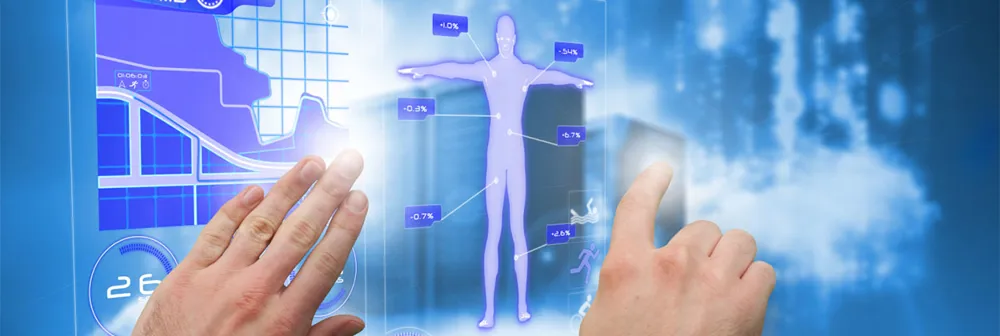Tech: The Third Wheel in the Doctor Patient Relationship
November 13, 2018
- Author: Robin Raskin


November/December 2018
More articles in this issue:
A decade ago, physicians struggled to cope when their patients came in armed with reams of Google printouts that explained their symptoms. Today, that same patient is often generating personal data through the use of apps and wearable devices. As more patients rely on a host of new technologies and services, rather than a traditional doctor’s office visit, the medical profession is re-examining the traditional doctor/patient relationship, making room for the third wheel: tech.
Tech adoption, along with the expanded depth of what devices and apps can monitor and detect, is well documented. According to a 2018 survey by Rock Health, the number of respondents adopting at least one digital health tool increased from 80 percent in 2015 to 87 percent in 2017. Nearly 70 percent of Americans have used mobile platforms to handle their health issues and 80 percent use some kind of wearable device to stay updated about their health activities. A Deloitte study indicates that DIY health spans generations. While millennials are more likely to use digital health tools, seniors are actively using apps or websites for refilling prescriptions or prescription reminders.
A Heath Care Shopping Spree
Today’s health and wellness consumer can shop for health tech just about anywhere - pharmacies, supermarkets, big box stores, cosmetic superstores, convenience stores and online retail, in partnership with their physicians or not. Walgreens, CVS, Costco and Amazon are just a few of those stepping up their digital health game with more products and services.
Best Buy made news this summer when it acquired GreatCall, a company that offers mobile products and wearables catering to older citizens, caregivers and those who need emergency help. At the same time Best Buy is testing a service called Assured Living to help older adults age in places with tech assistance. And the store’s digital health and wellness footprint has expanded to carry a variety of devices from baby monitors and pre-natal care to fitness devices, smart thermometers, blood pressure devices and more. For example, Walgreens’ Find Care Now option offers immediate telehealth care online and a suite of apps to manage everything from prescriptions to smoking cessation.
Health purchases often occur outside of traditional stores, too. Fitness clubs like Orangetheory Fitness use heart rate monitors during group workouts. Weight Watchers is redefining itself as a wellness company, rather than a weight loss company. The company learned that roughly 1.3 million unique members have a synced fitness device; 1.8 million unique members engaged on Connect, the company’s digital social network community; and 2.6 million members used the barcode scanner to track food.
The Doctor is Home
Digital health offers many alternatives to a doctor’s office visit. Tytocare, a new telehealth platform, looks like a small docking station. Consumers can plug various adapters into it to capture data from their ears, throat, lungs and more. Data is relayed via smartphone to the doctor, where it can be evaluated. Alivecor’s KardiaMobile, an electrocardiogram (EKG) monitoring system, eliminates the need for multiple sojourns to the doctor’s office by offering a special fingertip pad that records the EKG and transmits the data via Bluetooth to your mobile device.
Smart cameras enable another sort of diagnosis tool. After you receive its special kit, Healthy.io, analyzes your urine for conditions like infection or pregnancy. SkinVision offers regular skin cancer screenings by smartphone. At home genetic testing has also become more refined. Color looks at your propensity for inherited diseases like breast and lung cancer through in home genetic testing. Finally, on the rehabilitation and retraining side, apps like Brainpower provide mental workouts for students with ADHD or autism. Apps for everything from depression to stress management are hoping to replace drug therapies.
The Physician's Dilemma
Medical professionals are feeling the disruption, but ethical, legal and insurance reasons are constraining technology from an innovative takeover. While orthodontists make a living on expensive (not to mention painful) metal braces, companies like Invisalign have raised excitement by making a faster, more comfortable alternative that depends on frequent digital scans of the teeth (not making molds) and frequent modifications of a plastic computer-printed invisible brace.
Further, audiologists have learned to differentiate their services from over-the-counter hearing devices and Personal Sound Amplification Products (PSAPs). Those who want to amplify sound and tune it to their own levels can choose from offerings from dozens of companies including Audicus and Resound. A new generation of “hearables” are adding functionality beyond audible improvements. Ryan Kaudel of Valencell, maker of a hearable chip technology, points to Starkey, a large hearing aid brand, that recently announced a hearing aid that tracks physical activity, cognitive health, and features Amazon Alexa connectivity. Valencell also partnered with Sonion to make biometric sensing universal in hearables and hearing health devices.
Neutrogena’s SkinScanner is a dermatologist-in-a-box, thanks to the handheld device which has 12 high-powered LED lights, a 30 times magnification lens and highly accurate sensors to measure above and below the skin’s surface. It captures the size and appearance of pores, the size and depth of fine lines and wrinkles and the skin’s moisture, and then gives you an analysis and prescriptive advice.
Join our community of innovators and shape the future of technology.



